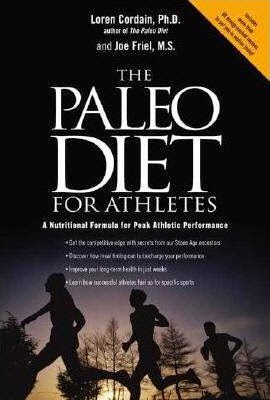First lets try and define the paleo diet: It's typically defined as the diet that was available in the paleolithic era which was in the pre-agricultural period between 2.5 million to 10,000 years ago. However, different regions had different diets during those times which means there was no one paleolithic diet. Books on Paleo state that humans should not have dairy products nor grains/legumes, since they did not exist in that era, but have a diet rich with meat/fish, vegetables and fruits, low in starches and only natural sources of sugar. The theory is that our "human genome was developed based on this diet" and by sticking to it we decrease risk of multiple chronic diseases and improve human performance. However, some of the science shows otherwise; anthropologists have evidence that during that era there was more reliance on starches and tubers. Moreover, research shows that our guts have evolved and continue to evolve since 10,000 years ago allowing us to digest many foods not present during that era. Lastly, to replicate that exact diet is quite impossible since most of the foods we currently have (meats, produce, fats) are very different than what they had back then.
Pros about the diet and book:
- The diet promotes eating less refined carbohydrates and more fruits and vegetables
- Lean meats (including game) are recommended
- Adequate fish (containing omega 3) is highly encouraged
- Healthy fats are important
- Timing is important when it comes to performance
- For recovery, combination of carbs and protein is important post exercise
Cons about the diet and book:
- Elimination of several food groups (e.g. grain, dairy) leads to limited variety which in turn could cause defeciencies
- Interestingly, alcohol in moderation is permitted (I wonder what caveman drank alcohol?!)
- The book itself only addresses endurance athletes, not power nor strength athletes
- To date, there are not many studies on the Paleo diet in athletes. The studies that have been done were done on mainly obese and sick individuals (heart disease, diabetes) which have seen improvements in body composition and health markers (blood lipids, blood sugar). Athletes are very different than obese individuals
- In the book there are multiple exceptions to meet the high carbohydrate demands of the endurance athlete. If there are so many exceptions are they really eating Paleo?!
- "The diet is nutritionally inadequate, expensive and impractical". Studies show that the diet would lack calcium, Iron and fiber recommendations as well as cost 9.3% more annualy
- "Acid ash theory states that by eating a diet high in grains and dairy we produce a high acid load on the body and the body must remove calcium from the bone to buffer the load." The more the food is acidic the more we are supposed to see calcium in the urine. However, urine pH does not represent blood pH as it stays more or less the same. Moreover, there is no evidence indicating that high calcium levels in the urine mean that there is less calcium in the bone or a decrease in calcium balance
- Some of the research quoted by the authors for "avoiding certain foods such as potatoes, peanuts and canola oil are misinterpreted and taken out of context"
- The authors mention that the Paleo diet is the best. However, currently, the people that live the longest (to about 100 years of age) eat meat infrequently and their diet is based on grains or starch
In summary, the Paleo diet promotes certain healthy habits that are worth keeping such as limiting processed foods, eating fruits and vegetables, healthy fats and lean meats. However, by adding dairy, legumes and grains in your diet you can have a more complete varied and healthy nutrition plan to promote your activity.

No comments:
Post a Comment